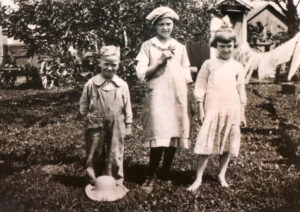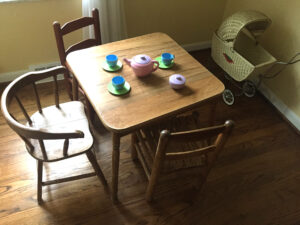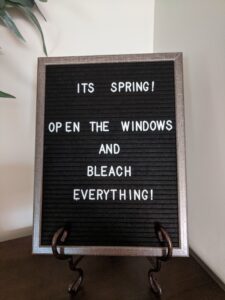Some of our grands are so young they will not remember this time of social distancing and isolation amid a global pandemic. Others are old enough that they will remember schools closing, playgrounds off limits, no visits with their friends, cousins or grandparents.
My father-in-law, Hub, had a phenomenal memory. He often told of the time his family home was quarantined. What struck me every time he told the story was the detail about the teddy bear and how that was permanently seared into his memory.

He was 5 at the time. His older sister, Alice, was 8 and his oldest sister, Mabel, was 12. Alice got sick and the doctor diagnosed it as scarlet fever. Outbreaks of scarlet fever in the early 1900s were often deadly or left children with lifelong disabilities. It was also highly contagious.
The doctor said Hub and Mabel had to stay away until Alice got better and the house had been fumigated.
Later in life, Hub put his memories to paper filling one yellow legal pad after another. He wrote, “There was no place to go except to Grandpa and Grandma’s, just down the road. We were packed up and sent off to their house. I had a little coaster wagon that we put our clothes in, and a few of my toys, and we walked down the road.
“On the way, my little teddy bear fell off, and when we discovered the loss, we went back to look for it. A man who was working with a crew paving the road found it and gave it back to me.”
He recalled days spent waiting out in the front yard, watching the men work on the highway and waiting for his sister Mabel to return from school.
His dad often brought them food, cereal, fruit and milk for the grandparents to feed them.
“My grandparents were old and poor and didn’t have very many pieces of good furniture. The mattresses were muslin bags filled with corn shucks. They weren’t too happy about having us there. They talked in German between themselves, most of the time, and we surmised they were conversing about us. Whether this actually happened or not, we do not know for sure, but we thought so.”
They stayed with their grandparents three or four weeks. “It was a happy day when Dad came down and told us we could go home.”
What will be our memories of this time in history?
I hope we remember family, friends and neighbors checking on one another, caring for one another. I hope we remember the exhausted medical personnel and first responders risking their own health, the truck drivers, food service workers, and all the clerks and cashiers who kept grocery stores open. Never forget the garbage collectors—and that the mail kept coming.
I hope we remember private industry retrofitting plants for the manufacture of facemasks and ventilators, scientists, researchers and pharmaceuticals racing to find therapeutic treatments and a vaccine.
I hope we remember how fear cast a long shadow. May we also remember renewed soul searching, fervent prayers and leaning hard on God.
We are writing history. May we write it well.




